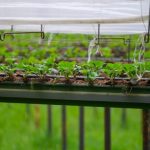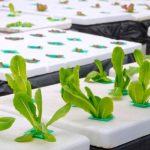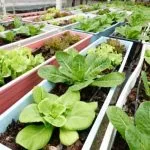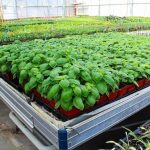Deep Water Culture (DWC) is a popular hydroponic growing method that you might have come across in your gardening journey. As a method that sustains plant roots in a well-oxygenated nutrient-rich water solution 24/7, DWC offers various advantages and challenges that are worth considering. In this article, we will walk you through the pros and cons of Deep Water Culture, helping you decide if it’s the right fit for your gardening needs.
In a DWC system, your plants’ roots are constantly immersed in oxygenated nutrient-rich water, unlike other hydroponic techniques like Ebb and Flow, Aeroponics, or Drip System. This constant exposure to essential elements leads to faster growth and potentially higher yields. Additionally, DWC systems are low-maintenance and relatively easy to set up, making them an attractive option for beginners in hydroponics.

However, it’s not all sunshine and rainbows with DWC. As you dive deeper into the world of Deep Water Culture, you’ll encounter some challenges and limitations that may impact your gardening experience. We’ll cover these disadvantages in detail, so you’ll have a comprehensive understanding of what you’re getting into with DWC. By the end of this article, you’ll be well-equipped to weigh the deep water culture pros and cons and make an informed decision about whether Deep Water Culture is the right hydroponic method for you.
Deep Water Culture Explained
Deep Water Culture (DWC) is a popular type of hydroponics that involves suspending your plants’ roots in a nutrient-rich, oxygenated water solution, allowing for accelerated growth and efficient nutrient uptake. In comparison to traditional soil-based growing, DWC can often yield better results due to the direct access the plant roots have to nutrients and oxygen in the water.
To set up a basic DWC system, you’ll need a few essential components like a reservoir or bucket, air pump, air stones, and net pots. Begin by filling your reservoir with a nutrient solution specifically designed for hydroponic systems. The nutrient solution mixes with the water, providing your plants with all the essential nutrients they need to grow and thrive.
Next, attach an air pump to the air stones and place them in the reservoir or bucket. These air stones are essential for oxygenating the water, as plant roots require oxygen for proper growth and development. The air pump continually pushes air through the air stones, which in turn release small bubbles into the water, ensuring the nutrient solution remains well-oxygenated.
Now it’s time to place your plants in the DWC system. You’ll want to use net pots or similar containers for each plant. These pots allow the plant roots to grow through their mesh-like openings, remaining suspended in the oxygenated nutrient solution. It’s essential to make sure the roots are submerged in the water, with around 1-2 inches of growth above the water line to ensure they have access to oxygen as well.
Various deep water culture systems are available, including individual bucket systems and larger reservoir-based setups. Choosing the right one for you will depend on factors like the size of your growing space and the number of plants you want to cultivate.
When considering a DWC system, bear in mind that aeration is a crucial element for ensuring optimal plant growth. As such, investing in a good quality air pump and air stones is essential. Additionally, you might consider purchasing a kit with all the necessary components for a quick, efficient setup.
Related: Use our own guide to learn in detail how deep water culture works.
Deep Water Culture Pros and Cons
Advantages of Deep Water Culture
One of the main advantages of Deep Water Culture (DWC) is the accelerated growth of your plants. This is thanks to the superior uptake of nutrients and oxygen from the nutrient solution. For example, you can grow lettuce and harvest it in 30 days instead of 60 in soil. Your plants’ roots will also become huge and less prone to root diseases which is beneficial for healthy growth.
In DWC, the oxygenation of the roots improves the plants’ absorption and increases cell growth rate within the plants. This results in higher yields compared to other growing methods.
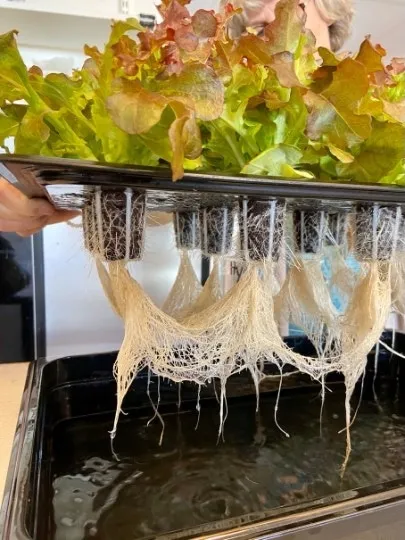
Another benefit is that DWC systems are typically low maintenance since they don’t use feeding tubes. Instead, an air pump ensures a constant flow of nutrient solution, reducing the need for constant monitoring and adjusting of the nutrient concentration.
Moreover, DWC systems have more stable water temperature and pH levels. This is due to the larger volume of water required, which makes it more resistant to external temperature influences and pH fluctuations.
Disadvantages of Deep Water Culture
Despite its numerous advantages, there are some downsides to consider when using a DWC system. One significant disadvantage is that if you do not constantly provide aeration, it can lead to the growth of algae and root rot. Maintaining a proper oxygenated solution using an airstone is crucial to avoid these issues.
Another challenge is the potential for pump failure in your DWC system. This could lead to a lack of oxygenation and nutrient distribution, which would harm your plants. It’s essential to have backup systems in place to prevent any potential damage.
For someone without prior experience in hydroponics, DWC can be more complex to set up compared to traditional soil gardening or other hydroponic methods. You’ll need to gather and assemble various components such as buckets, grow lights, a nutrient solution, a grow medium like Rockwool, etc.
Lastly, the initial setup and maintenance costs for a DWC system can be higher than other methods. You will need to invest in equipment like air pumps, airstones, and recirculating systems which might be more expensive than traditional soil gardening tools. We have a guide on how a recirculating hydroponic system works.
Scaling and Cost Considerations
Factors Affecting Cost
When considering a Deep Water Culture (DWC) system, it’s important to be aware of the various factors that affect cost. These can include the scale of the system, whether it’s large or small, the choice of grow medium, and any additional components needed, such as pebbles and nozzles.
For a small-scale DWC system, you can start with relatively low costs, as simple setups can be achieved for under $100. Keep in mind that DIY systems can be more cost-effective than purchasing pre-made ones.
In contrast, a large-scale DWC system could require more substantial investments. Depending on the system’s complexity and design, costs can range from $1,000 to over $5,000. While this may seem intimidating, keep in mind the potential for accelerated plant growth and increased yields that DWC promises. Many commercial growers prefer the efficiency of nutrient film technique systems because they have the know-how and resources to address the complexity. You can get a more in-depth comparison of NFT vs DWC systems with our takedown.
Grow medium is another consideration, as the type you choose can affect costs. Options like pebbles or perlite are popular choices for DWC systems and can be relatively inexpensive.
Scaling DWC Systems
When planning a DWC system, it’s crucial to think about scalability. Start by identifying your goals and how your DWC operation will expand as your needs grow.
If you begin with a small-scale system, know that scaling it up can be more complex than simply adding more containers or buckets. As you expand, you will need to consider factors like increasing nutrient supply, optimizing oxygen delivery, and managing pH levels.
One significant challenge in scaling up is power outage risks. As the size of the system grows, so does the need to maintain continuous power to your water pumps and air stones, as these are crucial for your plants’ survival. Invest in a reliable backup power source like a generator, to ensure your DWC system remains operational during unexpected outages.
Another aspect to keep in mind while scaling up is pest management. Larger DWC systems can attract more pests, so it’s essential to establish and maintain effective pest prevention strategies.
Overall, when considering the cost and scalability of DWC systems, it’s essential to weigh the upfront investment against the potential for rapid plant growth and increased yields. As you plan and scale your DWC system, always keep in mind your goals and factors like the grow medium, power outage management, and pest control.

